
views
Gathering Your Equipment

Have the correct mixing bowls. Do not use equipment that will be used for cooking. Use bowls and equipment made from stainless steel, tempered glass, and enamel. Avoid using copper and aluminum as they have a negative reaction with lye. Moreover, some plastics melt when mixed with lye. Use soap-only spoons made of styrene plastic or silicone.
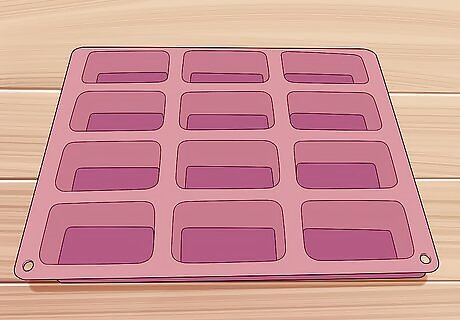
Get creative when choosing soap molds. You can pick up a variety of soap molds at your local craft store or use silicone baking pans. Silicone is prefered because you can peel off the soap molds easily.
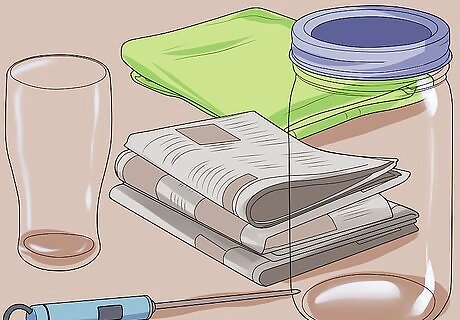
Gather all your tools. Aside from the actual ingredients you want in your soap, make sure you have a pint and a quart canning jar, a stainless steel thermometer that can read between 90 - 200 degrees Fahrenheit, newspaper, and an old towel.
Choosing Additives
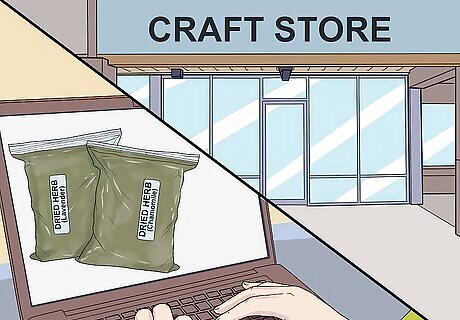
Pick up dried herbs from your local craft store or online. Ensure that you get dried herbs for your soap. Some popular choices are lavender, chamomile, lemongrass, or oakmoss. Make sure you know who will be using your soap as some people may be more sensitive or even allergic to certain herbs. Each soap batch should use about a ¼ cup of dried herbs.
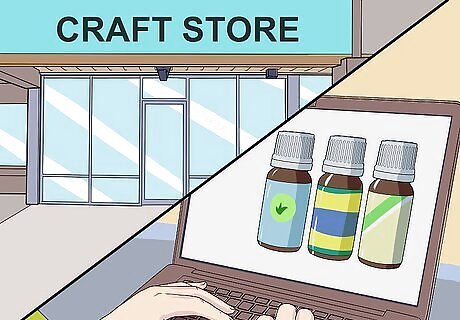
Get oils from your local craft store or online. While essential oils come from the roots, stems, flowers, and seeds of plants, their aroma can be artificially produced. Use about 15-20 drops of oil, or around a teaspoon, for a batch of this size.
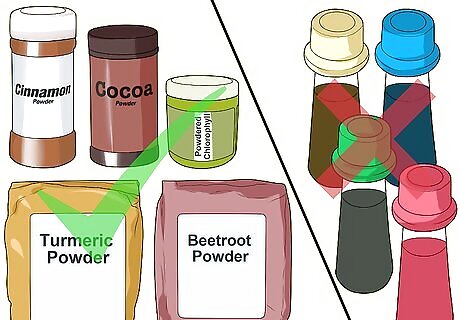
Stick to natural colors rather than adding artificial coloring. Cinnamon and cocoa powder create brown soap, powdered chlorophyll creates green, turmeric creates yellow, while beetroot makes an orange soap. Food coloring doesn’t hold up well in soap so it’s best to stick to natural colors.. Be aware that colors may change during the process, like magenta beet powder turning yellowish orange.

Understand how aromatherapy works. Choose your materials based on their healing properties. For example, a lemon scent is said to aid concentration while calming and clarifying someone who feels angry, anxious, or worn out. Mix and match your ingredients for your desired effect. Lavender is said to aid with emotional stress while rosemary is said to give energy, improve memory, and fight exhaustion, headaches and mental fatigue.Cinnamon aids concentration and focus while peppermint is said to boost energy and increase concentration.
Making Your Soap
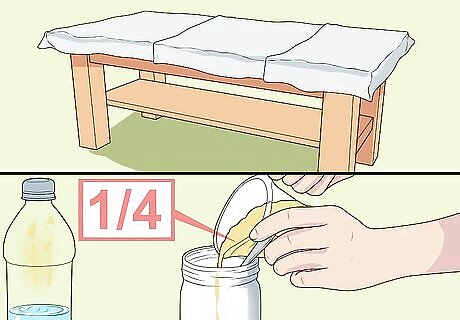
Prepare your work area and mix the lye. Use newspaper to cover your work. Before working with lye, make sure to have your protective gear on including gloves and eye wear. Scoop ¼ cup of lye and measure water in your quart canning jar. Stir as your slowly pour the lye into the water. Avoid the fumes by wearing a mask or standing back. Stir until clear and let sit. Make sure to use cold water. If you have the time and budget, you can use distilled water. Most pharmacies or grocery stores will have distilled water that you can purchase. You can purchase lye at your local drug store, craft store, or online.

Heat your oils once mixed together. Mix your oils together in the pint jar. Heat the pint for about a minute in the microwave or add the oils to a pan of water and heat over a stove. The temperature should be around 120 degrees Fahrenheit for your oils. If you’re making a mild to hard bar, use olive oil or use coconut oil in order to produce soap with a good lather. You may also use almond oil, grapeseed oil, sunflower oil, or safflower oil to achieve similar effects.
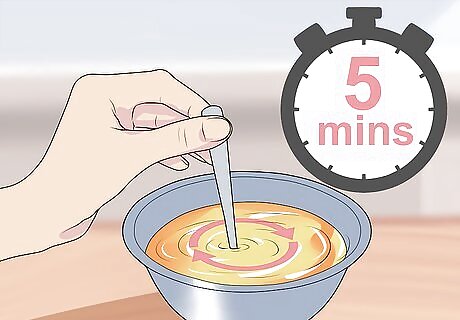
Stir the lye and oils together. Check the temperature of the lye. Wait for both the lye and oils to cool around 95° and 105° Fahrenheit. Make sure not to let these ingredients cool too low or your soap will come together too quickly and become coarse and crumble easily. Once both the lye and oils are at the right temperature, pour the oils into a mixing bowl and slowly stir the lye in by hand for about 5 minutes. You can also use an immersion blender to ensure as much soap contacts the lye as possible. Once the soap is thick and light in color, similar to vanilla pudding, it’s referred to as “trace” and is ready for herbs and essential oils.
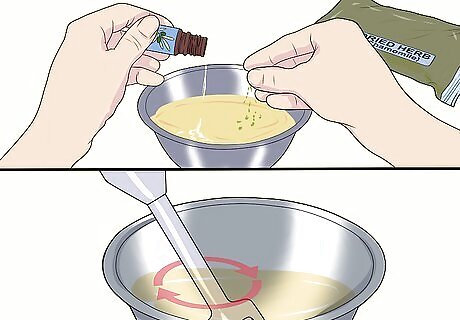
Add herbs, essential oils, or other preferences. Stir everything thoroughly and pour the mixture into your soap molds or silicone baking molds. Cover the molds with plastic wrap and cover with an old towel. The towel allows residual heat to keep the mixture warm and start the saponification process. Saponification is the process at which all your base ingredients becomes soap.

Age your soap. Let your soap sit for 24 hours. Let it sit for another 12-24 hours if your soap is still soft or warm. Once cold and firm, remove your soap and place onto parchment paper or a baking rack. Allow your soap to cure for about a month or 4 weeks but turn each piece of soap over at least once a week to ensure air gets to all the sides of the soap. If you’re using a loaf pan for your mold, you should cut the loaf into bars before the 4 week curing period.

Store the soap safely using wax paper or an airtight container. Once cured, wrap your soap in wax paper or place it in an airtight container because handmade soap creates glycerin, which pulls moisture from the air. Moisture may attract debris and dust so keeping your soap covered will keep them clean and pure.
Cleaning Up Correctly

Let your tools sit to get rid of the fat and lye. Neutralize the lye with white vinegar before washing your equipment. Let all your equipment sit for several days because residual lye will may burn your hands while fat will be very difficult to remove if fresh. Waiting allows the residual lye and fat to become soap that washes away when soaked in hot water.
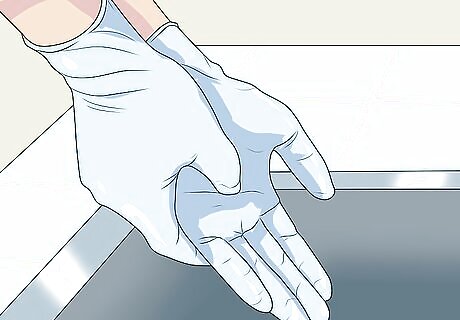
Wear gloves when cleaning up. Protect your hands because soap batter may still irritate your skin even though most of the saponification is over. Goggles and an apron are also great for protecting your eyes and clothing.
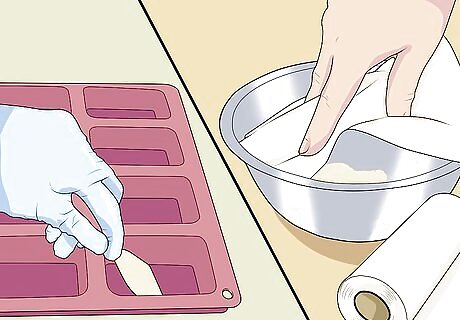
Use a spatula and paper towels to clean soap mixtures before rinsing. Scrape any extra soap batter with a spatula. Use paper towels to wipe raw soap from bowls and utensils. Getting rid of any extra raw soap material before washing cuts minimizes any harm the oils and lye might do to your pipes or septic tank.
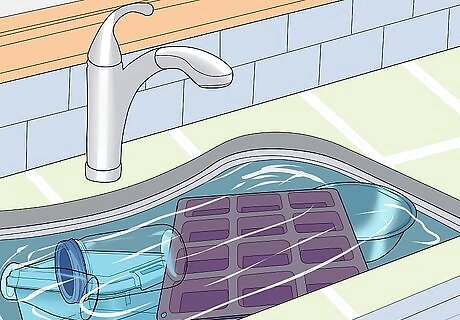
Soak all your equipment and containers. Place all containers, bowls, and utensils in your sink once you’ve removed any excess soap. Soak and wash in hot water and dish soap Grease-cutting dish soap and a special sponge for utensils work best.
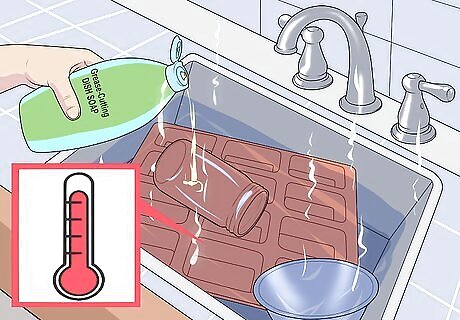
Rinse with extremely hot water. Grease-cutting dish soap and extremely hot water helps to both prevent clogging and greasy residue on your bowls and utensils. Handmade soap is gentle on the hands so don’t be afraid to touch any soap material.

















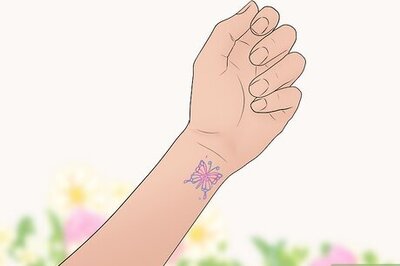
Comments
0 comment